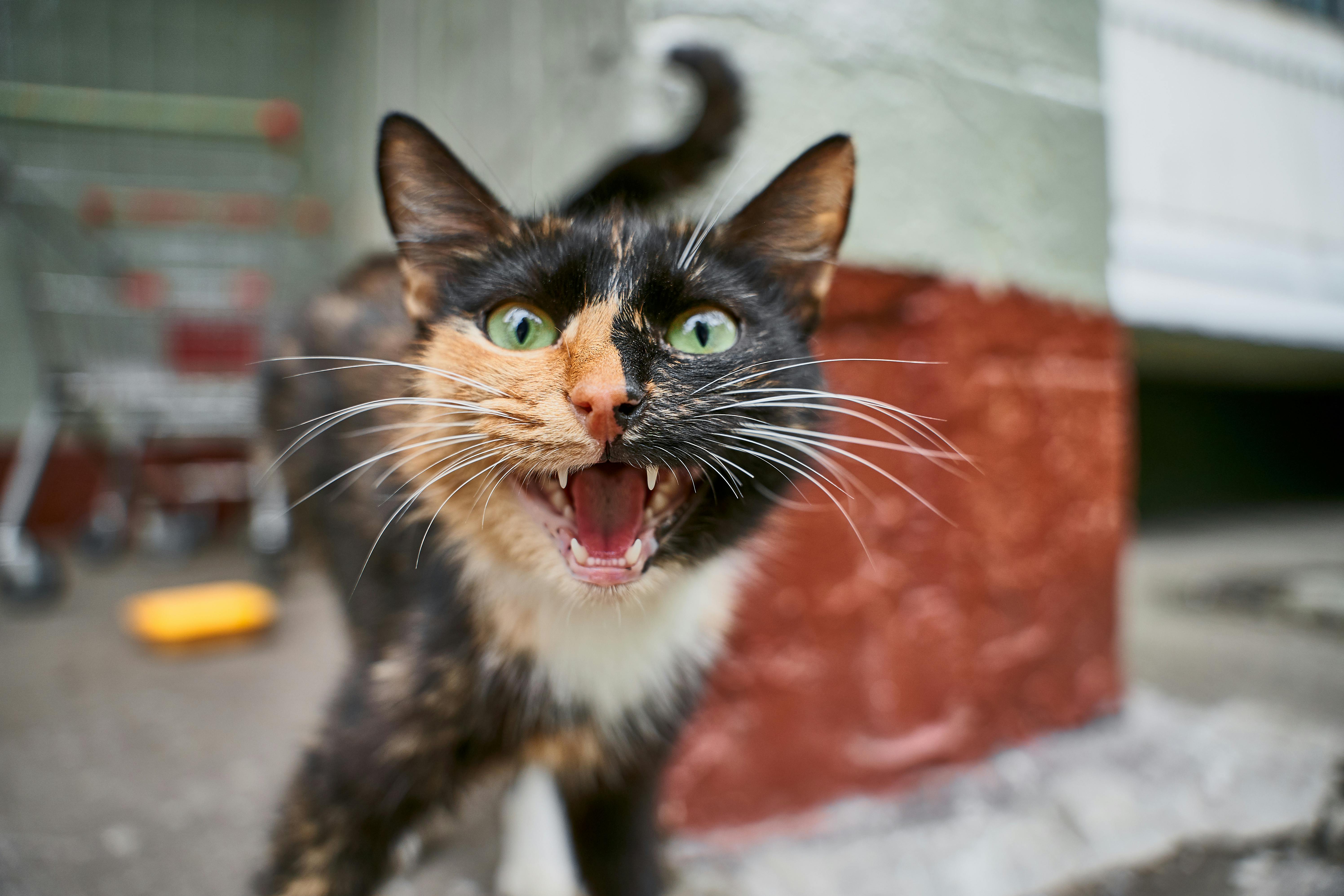 |
| Image credit: Pexels |
Cats, those enigmatic and expressive creatures, communicate with us through a symphony of sounds that reveal their desires, emotions, and intentions. From the prolonged "feed me" plea to the concise "adopt me" call, feline vocalizations are far from random. They are finely tuned expressions that convey specific messages, often altering their tone, length, and frequencies to convey distinct meanings. Join us as we explore the fascinating world of cat vocalizations and unveil the art of their nuanced communication.
The "Feed Me" Song: A Long and Low-Pitched Melody
Picture the scene: you're preparing your cat's meal, and suddenly, a plaintive and insistent "meow" fills the air. This is the unmistakable "feed me" call, a melodious request for sustenance. What makes this meow different from the rest?
Scientists have discovered that the "feed me" meow is longer in duration, with a distinctive energy concentrated in the lower frequencies. This specific vocalization mirrors the caterwauling of a hungry kitten, a sound that elicits a nurturing response from their caretakers. By utilizing longer and lower-pitched vocalizations, cats tap into an instinctive human inclination to respond to the needs of their young, effectively tugging at our heartstrings and ensuring they won't go unnoticed during mealtime.
The "Adopt Me" Song: Short, Sweet, and Equal
Venture into a local animal shelter, and you'll likely hear a chorus of meows from cats eager to capture your attention. Among these varied vocalizations, one stands out: the "adopt me" meow. Unlike the prolonged "feed me" call, this meow is shorter in duration and intriguingly equal in both low and high frequencies.
Research suggests that this balanced vocalization might be cats' way of appealing to potential adopters. By harmonizing both low and high frequencies, cats create a sound that's both attention-grabbing and emotionally resonant. The blend of frequencies could evoke a sense of curiosity, intrigue, and empathy in humans, ultimately enhancing the cats' chances of making a lasting impression and finding a forever home.
A Tapestry of Tones: Reflecting Emotions and Desires
Beyond the "feed me" and "adopt me" calls, cats weave a tapestry of vocalizations, each with its own distinct purpose and emotional hue. The trill, for instance, is often a greeting or an expression of excitement, while the chirp may signify anticipation or invitation to play. Hisses and growls are defensive signals, and the purr is a versatile vocalization that can convey comfort, contentment, or even distress.
Intriguingly, some cats display remarkable adaptability in their vocalizations, altering their tones based on their human companions' responses. This suggests a level of social intelligence, as cats learn to tailor their meows to elicit desired reactions from the people around them.
A Complex and Dynamic Language: A Deeper Connection
The world of cat vocalizations is a complex and dynamic language, a remarkable mode of communication that reflects cats' keen sensitivity to human cues and their innate instinct to express their emotions and desires. As we decipher the nuanced melodies of their meows, we enter a deeper understanding of the profound bond that connects us with our feline friends. It's a reminder that behind those captivating eyes and velvety paws lies a rich and intricate world of communication waiting to be explored.
@nolacrazycatlady #cats #breakfast #breakfasttime #feedingcats #lifewithcats #catmom #catlady ♬ Oh My Dayum! - The Gregory Brothers & Daym Drops









0 Comments